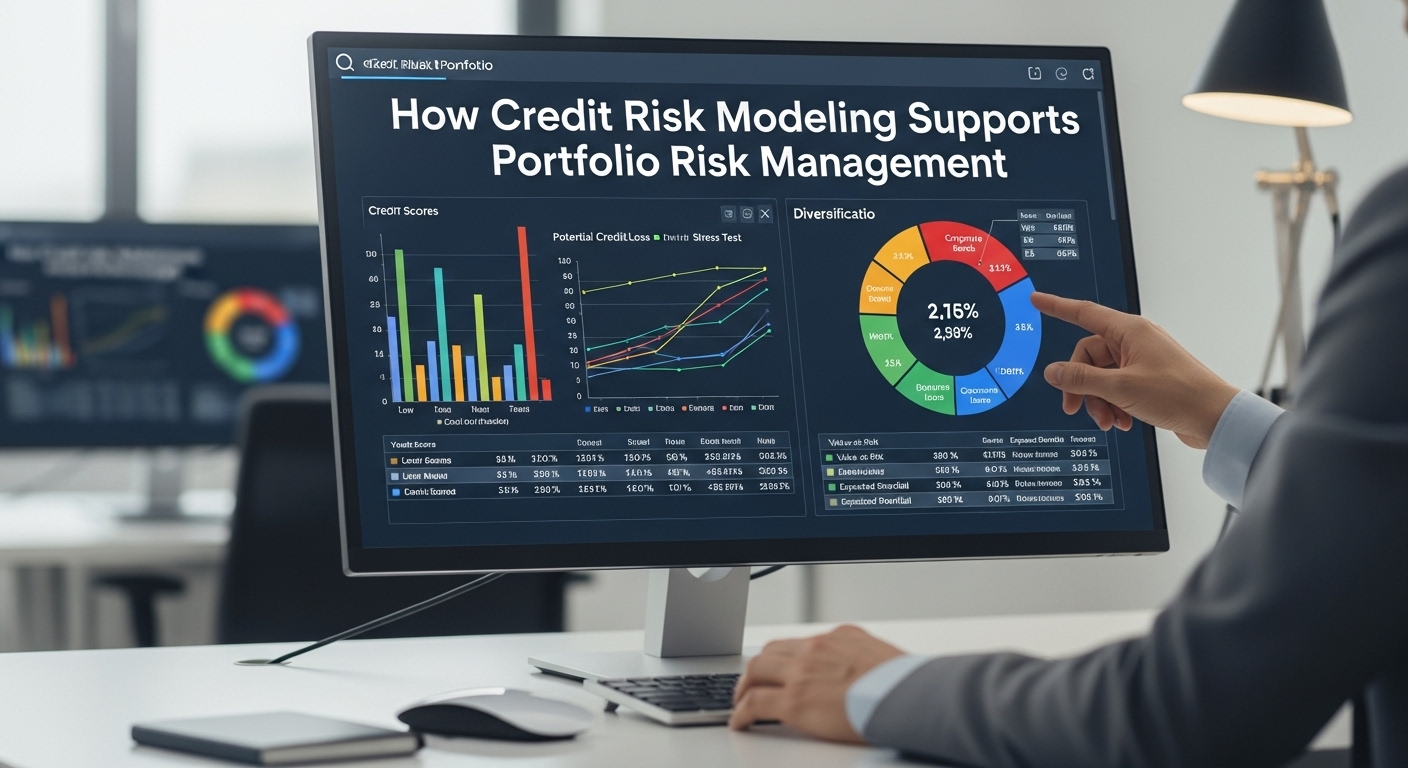Blog
How Credit Risk Modeling Supports Portfolio Risk Management

Managing lending portfolios requires effective credit risk modeling to reduce losses and maximize profits. Credit risk assessments analyze various data points to predict the likelihood of borrowers defaulting or paying their loans. This prediction enables you to make data driven lending decisions that protect and grow loan portfolios. Here are a few ways credit risk assessment and modeling support portfolio risk management
Calculates Default Probabilities
As a bank or mortgage lender, every borrower you give a loan to carries a probability of default. Your ideal borrower has a high credit score, which reflects their payment history, outstanding debts, credit utilization and length of credit history. Borrowers with a high credit score usually have a good income, low debt and a suitable repayment history. These borrowers have a low probability of default but a client’s financial situation may change throughout the year.
- Your client may lose their job, file for bankruptcy or receive an inheritance. Since credit score ratings are only adjusted a few times a year the rating may not reflect the current financial position.
- Effective credit risk modeling uses financial records and data to calculate default probabilities. Borrowers with lower credit scores can still be evaluated for carefully structured loans, such as smaller limits or higher interest rates, base on a thorough assessment of their repayment ability.
Estimates Potential Losses
Modeling credit risk usually involves estimating how much you lose if a borrower does not repay the loan. Also known as loss given default (LGD) this calculation provides an estimate of potential losses your loan portfolio may incur if borrowers default, incorporating collateral values and recovery rates. You can also determine the expected recovery from collateral and other repayment avenues. The calculation uses borrower data, asset values and loan structures.
Factoring LGD allows you to stress-test the portfolio and prepare for worst case scenarios. You may adjust lending strategies to maintain adequate capital reserves to cover losses, while still providing loan products to clients.
Provides Diversification Opportunities
Credit risk models utilize information from various sources, including credit bureau reports, borrower financial statements and publicly available economic data. This information is sorted and analyze by algorithms to create unique borrower profiles. You can identify borrowers with a higher or lower risk of default or determine the loan limit beyond which specific borrowers are more likely to default.
- Risk modeling also reveals risk concentration in specific sectors, regions or borrower groups and highlights correlations between borrowers and industries.
- This insight allows you to reduce exposure in high risk regions and increase lending options in stable markets.
How Credit Risk Modeling Supports Portfolio Risk Management Table
| Article Heading | One Line Summary | Key Action |
|---|
| Calculates Default Probabilities | Uses borrower data to estimate the chance of missing payments. | Price by risk; right size limits monitor changes. |
| Estimates Potential Losses | Computes loss given default (LGD) using collateral and recoveries. | Set reserves adjust terms plan for worst case. |
| Provides Diversification Opportunities | Finds sector/region clusters and correlation hot spots. | Reduce concentrations grow in stable areas. |
| Get Quality Credit Risk Modeling Data Today | Emphasizes timely, accurate data for better models. | Partner for high quality data refresh and validate. |
Get Quality Credit Risk Modeling Data Today
Managing portfolio risk allows you to minimize losses and maximize profits regardless of economic conditions. Effective management requires high quality financial data and real-time metrics that enable your models to make accurate predictions. Collaborate with a professional vendor to obtain high quality lending metrics that enhance your credit risk modeling.
